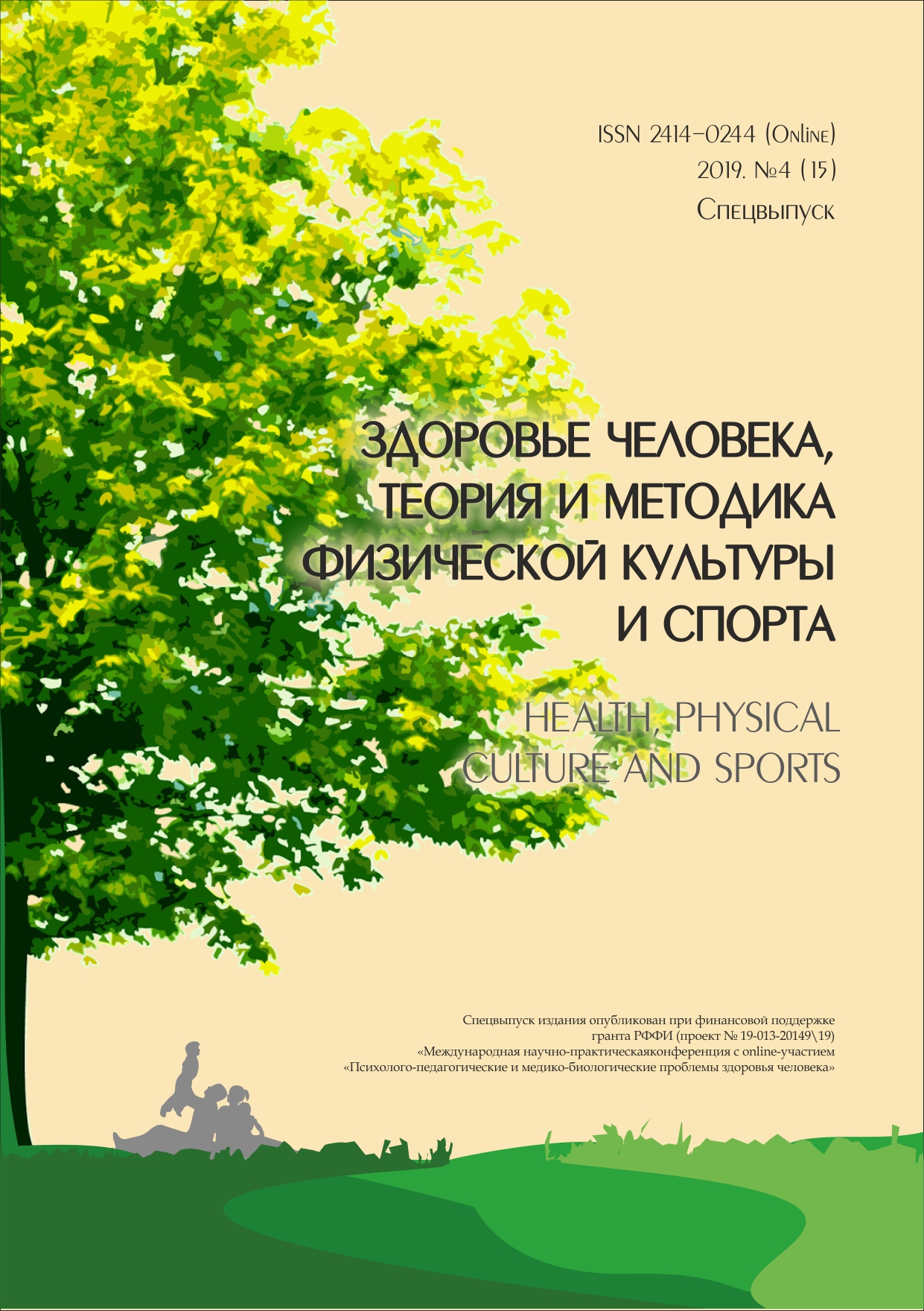“WWW-SPORT” TECHNOLOGY IN THE PROJECT “WWWOLYMPIC GAMES”
Abstract
The article investigates the possibility of transformation of passive-emotional reactionsof a person watching on TV (live) or recorded sports activities (tennis, handball, football, etc.)into active-emotional reactions. The transition to an active-emotional reaction of the audiencetakes place with the help of technology “WWW-Sport”, which implements the competitiveelements of “WWW-game”, designed to determine the winner among the most effective viewers.This is accomplished by the fact that on a television channel through a television camera or in arecording on a video recorder a real event is received on the screen of a television receiver, forexample, a sporting event. Prior to the broadcast of events, the practitioner is placed on a physicalactivity device, for example, a treadmill, with which it can arbitrarily change physical activity, forexample, increase or decrease the pace of running and transmit this information to the comparisonunit, which also receives information from the so-called “Console encoder”. At the encoder’s console,there is a coach or any person — an operator who has previously been trained to encrypt an eventobserved on the screen, for example, the trajectory of the ball and the point of contact of the ball withthe playing field. Comparison of the result of the action of the practitioner with the actual situationencoded by the trainer (operator) is carried out in the information comparison unit. An example isgiven of using such a sports technology called WWW Sport at the time of the final tennis game atthe 2000 Olympics in Australia, Olympic champion E. Kafelnikov.The use of “WWW-sport” technology is designed to promote healthy lifestyles of different agegroups of society, especially among students. “WWW-players’ should be familiar with the General principles and rules of “WWW-games’ before taking part in the “WWW-championship” in anysports simultaneously in different cities and countries. A key feature of the WWW game is that themain incentive for the physical activity of the “WWW-player”is a video PICTURE of a real game(for example, a handball competition or a football championship), which is broadcast on televisionto the place where the game is attended by “WWW-players”. The judges declare the winners of thegame after reviewing the intermediate results.
Downloads
References
Петрова К. Э., Каравашкин А. А. Проблемы формирования здорового образа жизни молодежи // Интеграция образования. 2005. № 4. С. 150–154.
Касаткина Н. Э., Семенкова Т. Н. Ценности здоровья студентов вуза в условиях современного образовательного учреждения // Вестник КемГУКИ. 2011. № 17. С. 140–147.
Авчинникова С. О. Деятельность специалиста социальной работы по формированию здорового стиля жизни клиентов: анализ содержания и функций // Известия Саратовского университета. Сер. Психология. Педагогика. 2010. № 2 (10). С. 48–54.
Виленский М. Я. «Общее и особенное в педагогических категориях «здоровый образ жизни» и «здоровый стиль жизни» // Вестник РГУ им. И. Канта. 2006. Вып. 11. Педагогические и психологические науки. С. 18–24.
Родионов А. В. «Принцип психофизического сопряжения в подготовке спортсменов-единоборцев высокой квалификации «Тренер» журнал в журнале «Теория и практика физической культуры» 2011. № 1 С. 12–19.
Мельников В. И. Организация спортивно-оздоровительной работы на судах промыслового флота. Владивосток: Дальневосточный федеральный университет, 2017. С. 42.
[Электронный ресурс] URL: https://fun.tochka.net/pictures/5294‑litsa-bolelshchikov-futbola/
[Электронный ресурс] URL: https://tennis-group.ru/tekhnika-igry-v-bolshoj-tennis/forkhendv-tennise
Калинкин Л. А. Новый класс телевизионно-компьютерных соревновательных тренажеров для детей дошкольного возраста с целью поддержки интереса к самостоятельным занятиям физическими упражнениям // Материалы 2‑й научно-практической конференции «Массовый спорт: организация, оснащение, поддержка». М., 2014. С. 16–17.
Калинкин Л. А., Иванов И. В., Готадзе И. И. Спортивно-игровая модель послетрудовой реабилитации как фактор профилактики последствий гиподинамии в процессе трудовой деятельности // Материалы научной конференции с международным участием; под ред. С. В. Гребенькова. СПб., 2019. С. 71–75.
Калинкин Л. А., Калинкин А. Л. Устройство для тренировки спортсменов / Патент № 2142308.
Зяблова Е. Р. Спортивные сооружения и спортивный инвентарь в городских и сельских детских садах (проект «САДКО») // Педагогико-психологические и медико-биологические проблемы физической культуры и спорта. 2013. № 1 (26). С. 44–54. [Электронный ресурс]. URL: http://www.kamgifk.ru/content/№ -1–26–2013‑года].
Королёв В. А., Калинкин Л. А., Юрьева И. В., Зяблова Е. Р., Мунтян Е. Р. Биотехнические системы в спорте // Медико-биологические проблемы спорта. Вестник спортивной науки. 2014. № 6. С. 36–41.
Электронные системы проверки следа «Hawk-Eye» [Электронный ресурс]. URL: https://tennis-i.com/tennisnaya-entsiklopediya/dlya-lyuboznatelnykh/hawk-eye-elektronnaya-sistemaproverki-sleda.html
Электронная система отслеживания линий «FOXTENN Top Real Precision System» [Электронный ресурс]. URL: https://tennis-i.com/tennisnaya-entsiklopediya/dlya-lyuboznatelnykh/foxtennelektronnaya-sistema-otslezhivaniya-linij-i-statistiki-tennisnykh-matchej.html
Электронная система FOXTENN [Электронный ресурс] URL: www.foxtenn.com/
An author should not normally publish manuscripts describing essentially the same research in multiple journals or publication venues. Such redundant publication is generally considered to constitute unethical publishing behavior, and if discovered may result in a manuscript under consideration being rejected, or a published article being retracted.
Authors of manuscripts reporting on original research should present an accurate account of the work performed, accompanied by an objective discussion of its significance. Underlying data should be represented accurately in the manuscript. The manuscript should contain sufficient detail and references to permit others to replicate the work. The fabrication of results and the making of fraudulent or knowingly inaccurate statements constitute unethical behavior and may be cause for rejection or retraction of a manuscript or published article.





